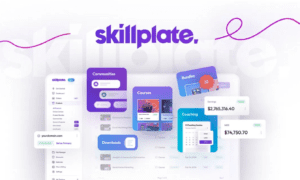In today’s rapidly evolving digital landscape, businesses are increasingly turning to game aggregation software as a core tool for driving innovation and efficiency. By simplifying access to vast content libraries, aggregation enables platforms to stay ahead of industry trends and deliver high-quality gaming experiences without the slowdowns caused by outdated integration methods. It is not just a technical solution it’s a strategic enabler for companies that want to innovate, scale, and stay ahead.
Innovation Through Simplification
One of the most significant barriers to innovation is operational complexity. In the past, digital gaming platforms depended on multiple one-to-one integrations with individual developers. Every new provider meant separate negotiations, contracts, technical setups, and long testing cycles. This approach created bottlenecks, delayed launches, and significantly increased operational costs.
Aggregation eliminates these obstacles by consolidating everything into a single, streamlined integration. This shift allows businesses to redirect valuable resources—both financial and human toward creating innovative user experiences rather than constantly troubleshooting backend issues. By simplifying integration, companies can focus on product evolution, creative marketing, and expanding their audience reach.
One of the most significant barriers to innovation is operational complexity. In the past, digital gaming platforms depended on multiple one-to-one integrations with individual developers. Every new provider meant separate negotiations, contracts, technical setups, and long testing cycles. This approach created bottlenecks, delayed launches, and significantly increased operational costs.
Aggregation eliminates these obstacles by consolidating everything into a single, streamlined integration. This shift enables businesses to redirect valuable resources, both financial and human, to creating innovative user experiences, rather than constantly troubleshooting backend issues. By simplifying integration, companies can focus on product evolution, creative marketing, and expanding their audience reach.
Advantages for Innovators
Adopting aggregation brings a host of benefits that directly support digital progress and innovation:
- Rapid Deployment: Platforms can launch new games and features quickly, keeping pace with market demands
- Reduced Workload: One integration replaces many, drastically lowering the amount of technical maintenance required.
- Scalable Growth: Businesses can add new genres and explore emerging trends without major redevelopment.
- Lower Costs: Aggregation reduces licensing, contract management, and infrastructure expenses.
- User Engagement: A constantly refreshed library gives users reasons to return regularly, increasing loyalty and session length.
For growing businesses, these advantages make aggregation an obvious choice. Instead of being bogged down by repetitive integrations, companies can innovate continuously.
How Aggregation Powers Future-Ready Platforms
A modern game aggregation platform does far more than connect developers and operators. It acts as a technological backbone that supports the entire ecosystem. These platforms integrate tools such as real-time analytics, mobile optimization, and AI-powered recommendations, making them ideal for companies that aim to blend innovation with operational efficiency.
For example, mobile-first optimization ensures games run smoothly across different devices, reaching a broader audience. Analytics provide businesses with insight into user behavior, enabling them to tailor content and enhance engagement. AI-driven recommendations personalize the experience, encouraging users to explore more titles and spend more time on the platform.
These combined tools enable companies not only to innovate but also to deliver targeted, data-informed strategies that resonate with their audiences.
Technology at the Core
What makes aggregation particularly powerful is the advanced technology built into these solutions. Modern platforms support cross-device compatibility, cloud-based infrastructures, and flexible APIs. This ensures that users can access games seamlessly—whether on desktop, mobile, or other connected devices—without interruptions or performance drops.
For businesses, this means less time spent on patching compatibility issues and more time developing innovative features. Cloud technology, in particular, offers scalability, allowing platforms to handle increased user loads during peak periods without compromising performance.
Additionally, these technological foundations make it easy to integrate future advancements, whether that involves blockchain transactions, virtual reality experiences, or other emerging innovations. Companies using aggregation are essentially building future-ready systems that can evolve with the industry.
Why Innovation Needs Aggregation
In the competitive world of digital entertainment, speed and variety are everything. Platforms that rely on old integration methods face numerous challenges:
- Delayed Launches: Each new provider adds weeks or months to the timeline.
- Limited Content Libraries: Slow integrations mean fewer games, which can drive users to competitors.
- Higher Costs: Managing multiple deals and infrastructures increases operational expenses.
- Stunted Innovation: Technical barriers limit the ability to experiment with new ideas.
Aggregation addresses these issues by offering a single, flexible solution that facilitates rapid innovation. Platforms can introduce new content, experiment with interactive features, and pivot quickly when trends shift. Whether launching in new markets, exploring new genres, or expanding to new devices, aggregation provides companies with the freedom to innovate without being hindered by backend complexity.
Real-World Impact of Aggregation on Innovation
Many successful digital gaming businesses have already adopted aggregation as part of their growth strategies. Startups use it to launch with extensive content libraries from day one, enabling them to compete with larger platforms without the need for massive development teams. Established companies utilize aggregation to integrate innovative technologies, such as real-time personalization, cloud streaming, and cross-platform compatibility features that keep them ahead of user expectations.
For example, when a platform utilizes aggregation to introduce new game genres, it can quickly test market reactions and adjust its content strategy in real-time. This agility is crucial in an industry where trends can shift overnight. By contrast, companies that rely on traditional integration methods often find themselves reacting too slowly to capitalize on opportunities.
The Road Ahead
The future of digital innovation is moving toward greater connectivity, personalization, and accessibility. Aggregation sits at the heart of this transformation. As AI becomes more sophisticated and cloud gaming more prevalent, aggregation platforms will be essential for delivering unified, efficient, and innovative digital experiences.
Rather than focusing solely on short-term gains, businesses that adopt aggregation are building infrastructure for long-term success. This future-proofing ensures that they can quickly adapt to emerging technologies and evolving user expectations, thereby maintaining their competitive edge in a rapidly changing market.
Conclusion
Game aggregation simplifies complex processes, reduces costs, and unlocks the potential for continuous innovation. By adopting advanced aggregation technology, businesses can focus on what truly matters: delivering exceptional user experiences and driving digital transformation.
For companies determined to stay ahead of the curve, adopting aggregation isn’t just an option it’s essential. With the right software, platforms can remain future-ready, competitive, and user-focused in an increasingly dynamic industry.



































